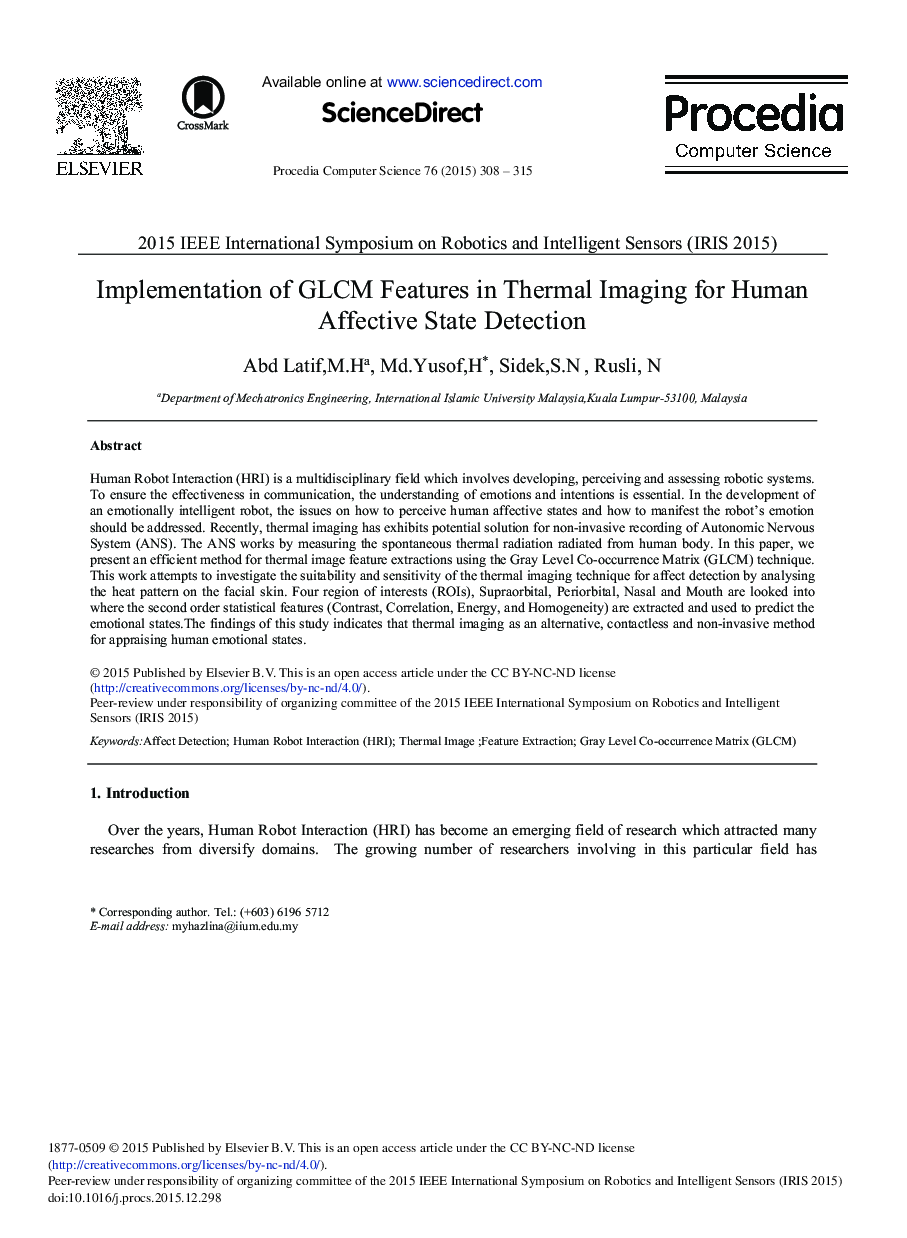| Article ID | Journal | Published Year | Pages | File Type |
|---|---|---|---|---|
| 484315 | Procedia Computer Science | 2015 | 8 Pages |
Human Robot Interaction (HRI) is a multidisciplinary field which involves developing, perceiving and assessing robotic systems. To ensure the effectiveness in communication, the understanding of emotions and intentions is essential. In the development of an emotionally intelligent robot, the issues on how to perceive human affective states and how to manifest the robot's emotion should be addressed. Recently, thermal imaging has exhibits potential solution for non-invasive recording of Autonomic Nervous System (ANS). The ANS works by measuring the spontaneous thermal radiation radiated from human body. In this paper, we present an efficient method for thermal image feature extractions using the Gray Level Co-occurrence Matrix (GLCM) technique. This work attempts to investigate the suitability and sensitivity of the thermal imaging technique for affect detection by analysing the heat pattern on the facial skin. Four region of interests (ROIs), Supraorbital, Periorbital, Nasal and Mouth are looked into where the second order statistical features (Contrast, Correlation, Energy, and Homogeneity) are extracted and used to predict the emotional states. The findings of this study indicates that thermal imaging as an alternative, contactless and non-invasive method for appraising human emotional states.
